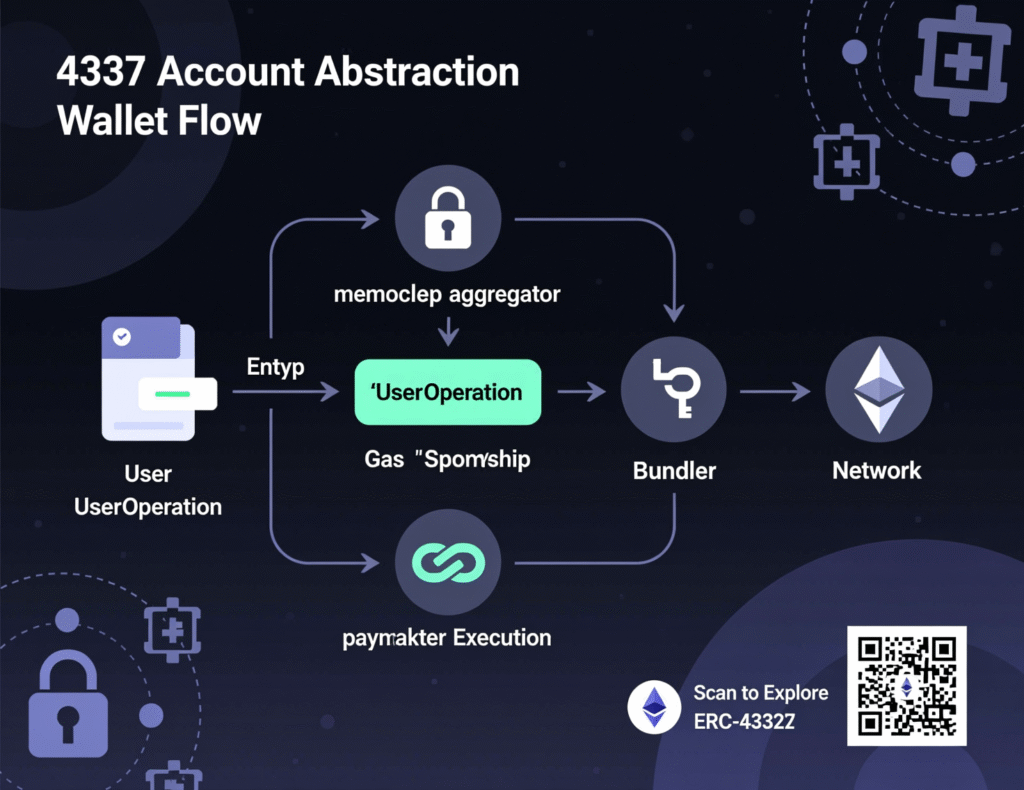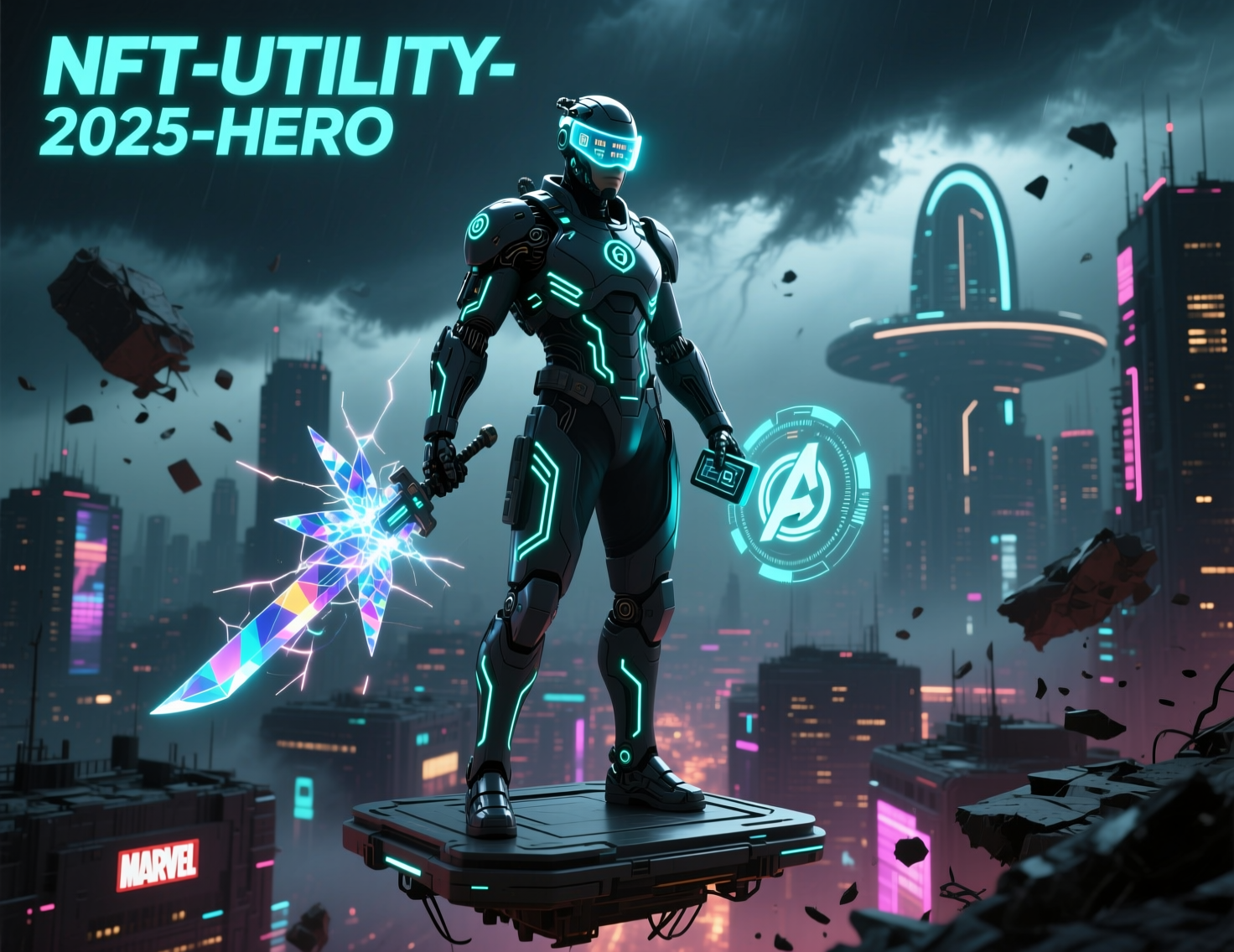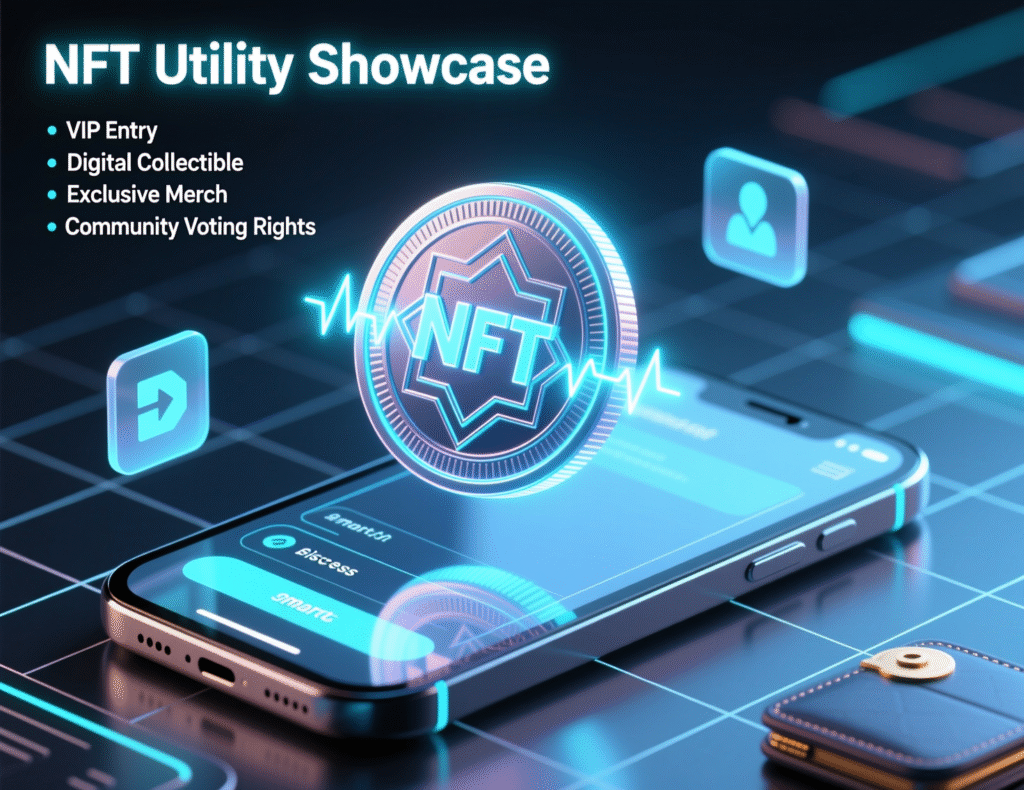NFTs Reinvented
NFT utility is no longer a buzzword it’s the backbone of how Web3 powers products people actually use. In 2025, the conversation has shifted from speculative JPEGs toprogrammable NFT utility that unlocks memberships, event access, game items, credentials, and phygital rewards tied to verifiable on-chain identity.
New standards like ERC-4337 (account abstraction) and ERC-6551 (token-bound accounts) make NFTs smarter, while experiments with non-transferable “soulbound” tokens extend digital reputation and credentials. For brands and builders, the question is no longer if to use NFTs, but how to design NFT utility that’s safe, seamless, and genuinely valuable. SSRN+3docs.erc4337.io+3docs.erc4337.io+3
TL;DR
NFT utility now focuses on access, credentials, and ownership portable across apps.
ERC-4337 and ERC-6551 enable smarter wallets and NFTs that can own assets and take actions.
Brands learned hard lessons from short-lived programs (e.g., Starbucks Odyssey), but “phygital” rewards and loyalty are maturing.
Market volumes cooled, but user counts and low-price transactions rose pointing to everyday NFT utility vs. high-end speculation.
The Market Reset That Made Room for Real Utility
After 2021’s froth, NFT trading volumes compressed and average prices fell through 2024. By Q2 2025, trading volume dropped to ~$867M (-45% QoQ), while sales counts surged 78% to 14.9M a strong signal that more people are transacting at lower prices, consistent with everyday NFT utility use cases (tickets, passes, game items) rather than elite collectibles.
This shift aligns with broader crypto cycles and with brand experiments that pruned hype in favor of durable value. Starbucks sunset its early NFT beta in 2024, a reminder that “utility” must be intuitive, rewarding, and long-term to survive.
The 2025 Utility Stack: Three Layers You Need
Smart Wallets & Seamless UX (ERC-4337)
Account abstraction (ERC-4337) enables wallets with passkeys, social recovery, transaction batching, and gas sponsorship crucial for smooth NFT utility. Think “sign in with passkey, one-tap mint, sponsor the gas.” Builders can orchestrate actions behind the scenes and keep UX consumer-grade.

Why it matters
If utility is locked behind clunky seed phrases and gas prompts, users churn. AA unlocks web-native experiences people expect.
Token-Bound Accounts (ERC-6551)
ERC-6551 gives each NFT its own smart-wallet account. Your PFP or game avatar can own assets, sign messages, and maintain a history turning static art into an interactive identity. For NFT utility, this means a character can carry gear across games or a membership pass can accumulate perks and proofs.
Identity & Credentials (SBTs / Non-Transferable NFTs)
Non-transferable tokens popularized by the “soulbound” concept encode skills, certifications, and community roles. They’re promising for reputation and NFT utility in things like ticket upgrades (verified fan), discounts (verified student), or compliance (KYC-attested wallets) while keeping control with the user.
Design Patterns That Win in 2025
Access & Membership
Tiered access
Token gates for chat, content, courses.
Progressive perks
The NFT accrues benefits as you engage; TBAs store the history.
Interoperable passes
One pass, many venues possible via open standards and on-chain proofs.
Tickets & Loyalty
Post-event unlocks (recordings, drops).
Phygital redemptions (merch, limited runs).
Dynamic tiers reputation tokens upgrade your perk level automatically.
Gaming & Digital Goods
Inventory that travels using ERC-6551; items equipped by your “account-NFT.”
Crafting & quests with on-chain proofs for real ownership.
Credentials & Compliance
Employment, training, KYC badges as non-transferable NFTs.
Privacy-preserving attestations only prove what’s needed.

Case Study #1: Phygital Rewards That Don’t Feel Gimmicky (Gucci)
Luxury experimented early and kept iterating. Gucci rewarded NFT holders with exclusive physical goods, redeemable by burning the NFT clear, tangible NFT utility that bridges digital status and real-world value. The lesson: when perks are scarce, on-brand, and logistically smooth, customers care.
Takeaways for builders
Tie perks to core brand desire (e.g., limited craftsmanship).
Make redemption frictionless (AA wallets + QR in-store).
Close the loop with post-redeem badges (non-transferable proof)

Case Study #2: Loyalty Beta → Sunset → Smarter Next Iteration (Starbucks)
Starbucks’ Odyssey beta showed how hard it is to align Web3 mechanics with mainstream UX. The program was discontinued in March 2024, reminding teams to measure CAC/LTV impact and simplify wallet flows. Future loyalty plays will likely lean on passkeys, gas sponsorship, and background wallets so NFT utility is invisible but present.
Cautionary Tale: When Utility Drifts, Community Notices
The Australian Open’s early NFT experiment lost momentum; floor prices collapsed and support faded by 2025 as programs shifted elsewhere. NFT utility must be maintained benefits, communications, and tech all need ongoing care or holders disengage.
Build It Right: A Practical Blueprint
Choose your chain & wallet UX
Default to chains with robust AA tooling and widely supported marketplaces.
Use passkeys and social recovery to eliminate seed-phrase fear.
Model your asset
Transferable NFT for access/ownership, non-transferable for credentials/reputation.
Consider an ERC-6551 TBA if your asset needs to own sub-assets or act autonomously.
Map the utility lifecycle
Onboarding → Earning → Redeeming → Post-redeem proof.
Bake in analytics to track redemption rates and repeat engagement.
Reduce user friction
Sponsor gas, batch transactions, pre-authorize actions where safe (4337).
Governance & compliance
Use non-transferable attestations for KYC/age where applicable.
Fail gracefully
If a perk ends, sunset with swaps/upgrades or compensatory benefits so value persists.
10 Ready-to-Ship Utility Ideas (You Can Launch This Quarter)
Dynamic memberships that level up via on-chain engagement.
Event tickets that auto-mint highlight reels after scanning at the gate.
Course completion badges (non-transferable) unlocking alumni rooms.
Phygital warranties: NFT proves ownership and service history.
Game avatars as TBAs owning skins, emotes, and quests.
Tiered loyalty with AA wallets sponsoring gas for redemptions.
Creator passes with revenue-share logic on secondary sales.
Device access tokens (e.g., gym equipment, coworking booths).
Subscription NFTs that pause/resume via on-chain status.
Community grants gated by reputation badges.
Measurement: What to Track Beyond Floor Price
Redemption rate of perks (core proxy for NFT utility).
Repeat actions per holder (upgrades, renewals).
Churn post-perk do holders stay engaged?
Cross-app usage if you support interoperability.
Support ticket themes about wallet/UX use these to prioritize AA features.
Risks & Reality Checks
Hype vs. habit
If utility doesn’t create repeat habits, it won’t stick.
Custody & key loss
Use AA and social recovery; educate users.
Program fatigue
Plan a 12-month perk calendar before mint.
Regulatory drift
Avoid implied financial returns; keep messaging about utility, not profit.

Last Words
The winners in 2025 build NFT utility that feels invisible but invaluable. Account abstraction removes wallet friction; token-bound accounts turn static tokens into living identities; and non-transferable credentials give reputation a portable home. If your roadmap blends these layers and delivers consistent, brand-authentic perks, your holders won’t care that it’s “Web3” they’ll just call it useful. Now is the moment to design and ship NFT utility people actually love.
CTA
Want a one-page utility blueprint for your brand or game? Share your goal (loyalty, tickets, credentials), and I’ll map a launch plan with AA + TBAs in 48 hours.
FAQs
Q : How do NFTs provide real utility in 2025?
A : NFTs act as programmable access passes, credentials, and portable inventories. With ERC-4337 you can sponsor gas and batch actions; with ERC-6551, an NFT can hold assets and sign actions, enabling memberships, tickets, and cross-game items that people actually use.
Q : How can brands avoid failed NFT launches?
A : Start with a clear value loop (earn → redeem → status), keep UX seedless via AA, and commit to a 6–12 month perk roadmap. Sunset programs with swaps or make-good benefits instead of pulling the plug.
Q : How do soulbound tokens work for identity?
A : They’re non-transferable tokens that encode achievements or roles (e.g., certification, verified fan). They resist speculation and anchor reputation to a wallet.
Q : How do token-bound accounts improve utility?
A : They let an NFT behave like a wallet—owning sub-assets, logging history, and interacting with apps. Perfect for game avatars and memberships that evolve.
Q : How does account abstraction improve UX?
A : It enables passkeys, social recovery, sponsored gas, and transaction batching so mainstream users can use NFT utility with web-like simplicity.
Q : How do I measure success without obsessing over floor price?
A : Track redemption rates, repeat actions, and retention after perk use. These show true engagement and lifetime value.
Q : How can I connect physical items to NFTs?
A : Use redemption flows (QR + AA wallet) and burn-to-redeem mechanics for limited goods; issue a non-transferable proof post-redeem. Gucci’s approach is one template.
Q : What happens if a program ends?
A : Communicate early; offer swaps/upgrades; end with non-transferable proofs so status persists. The Australian Open example shows the risk of abrupt exits.


